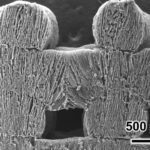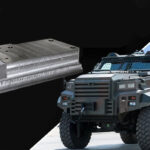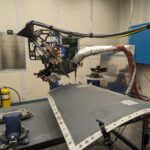Graphene has become somewhat of a dream material for many engineers and researchers. These single layer carbon molecules give scientists the ability to tinker with some very desirable properties such as electrical conductivity and material flexibility. Now, Lawrence Livermore National Laboratory and Virginia Tech researchers are showing a way forward by 3D printing the structures as part of a new study.
While the research allows for only a small amount of the graphene as of now, it is still immensely promising work. Currently, the printer allows for 10 microns, 10 times better than previous methods allowed. They are also the most complex graphene structures that scientists have ever printed.
“It’s a significant breakthrough compared to what’s been done,” lead author Ryan Hensleigh said. “We can access pretty much any desired structure you want.”
Graphene has tons of applications in potential flexible electronics and even in aerospace and automotive designs. The material is convenient as it is highly durable and flexible while allowing for excellent heat and electrical conductivity, making it ideal for high stress environments and engineering in general.
Graphene Printing Techniques
While originally scientists extruded graphene like a toothpaste, this method only allowed for very simple structures. The new method is a lot more complex. Starting with graphene oxide, the process crosslinks the sheets to form a porous hydrogel. Then, they used ultrasound to derive a hydrogel and added light-sensitive acrylate polymers.
As one can imagine, the presence of light-sensitive particles allowed the users to apply projection micro-stereolithography. The team created their desired solid 3D structures with the graphene oxide trapped in long, chains of acrylate polymer. In the final steps, they placed the 3D structures in a furnace burning off the polymers and fusing the final object into shape, leaving behind a pure and lightweight graphene aerogel (by burning of the hydrogen).
What’s fascinating about this method is that it avoids one of the critical pitfalls of previous iterations of graphene processing. Previously, methods would you forego most of the lucrative mechanical properties found in its single-sheet form.
Featured image courtesy of Virginia Tech












